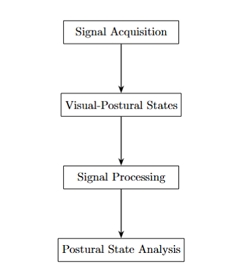Visual-Balance Echo-Dispersal System (VBEDS): Measurement of Physical Signals for Postural Stability Prediction in the Elderly
Main Article Content
Abstract
Postural instability in the elderly is a leading contributor to falls, necessitating precise and non-invasive balance assessment systems. This study proposes the Visual-Balance Echo-Dispersal System (VBEDS), which evaluates postural fluctuations based on physical signal transitions under varying visual conditions. Data were collected from 25 elderly participants using a customized signal acquisition and processing setup. The system captures fluctuations across postural states—eyes open, eyes closed, head tilted directions—analyzing frequency variations within the 0.01 Hz to 2 Hz range. By comparing conditions such as VB-ΩEDNO-NC, VB-ΩEDPO-PC, VB-ΩEDHR-HL, and VB-ΩEDHB-HF, the model distinguishes between abnormal, normal, and optimal balance states. Results show significant variation in visual-balance fluctuation averages, identifying critical thresholds for fall-risk prediction. The VBEDS system demonstrates effective acquisition, signal separation, and analysis of human postural motion, making it a promising approach for clinical and home-based fall prevention monitoring. Future integration with real-time correction and feedback mechanisms may enhance its applicability in geriatric care and rehabilitation.
